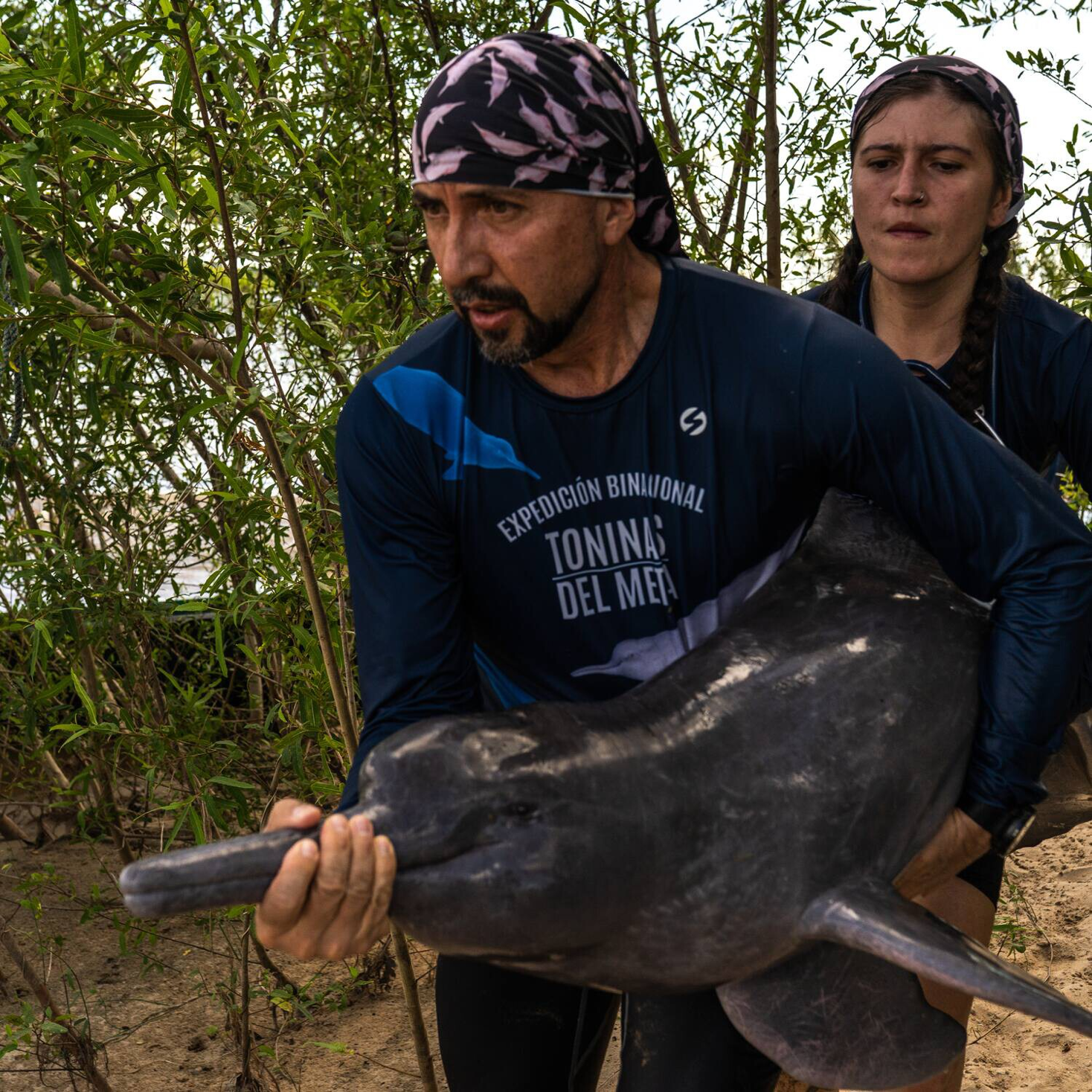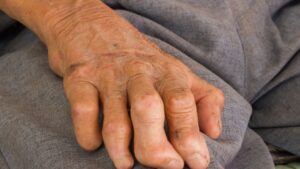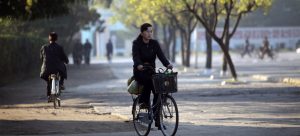PUERTO CARREÑO, Colombia — The scientists had traveled down the muddy Orinoco River for hours, their single-engine boat hemmed in by rocks the size of small mountains, when the lead biologist let out a shout.
“The dolphins!” Fernando Trujillo exclaimed, startling the team. “They’re right there!”
The 15 passengers swiveled their heads and the captain sped to the spot. It was a rare sight, an endangered species emblematic of the Colombian Amazon, considered sacred by the region’s Indigenous communities: the pink dolphins.
And here were six of them — all females, including four calves. These particular dolphins lacked the light pink hue found in some members of the species. But still, they mesmerized.
The team leaped into action: Members covered each dolphin’s eyes to reduce the stress to come. They paid close attention to their breathing. They kept their bodies wet at all times, except for their blowholes, which Trujillo would monitor and protect.
Trujillo, who has devoted decades to researching these dolphins, had brought his team here at the confluence of the Meta and Orinoco rivers to take blood and tissue samples. They would study their physical health. But through them, they hoped to learn much more — including how the mining of gold and other extraction activity is threatening human life here.
In the Amazon, river dolphins are the canaries in the coal mine — “the sentinels of the aquatic ecosystems,” said Jimena Valderrama, 27, a veterinarian who has worked with Trujillo for three years: “They accumulate what we dispose of in the rivers.”
Among the scientists’ biggest concerns was the dolphin’s exposure to mercury, a heavy metal used in mining that can cause lethal damage to the brain, heart and kidneys, and what it might suggest about the exposure of the people, near and far, who eat fish from the river.
Tests revealed that three of the dolphins had an average of 3.45 micrograms of mercury per liter of blood — a level Trujillo called “alarming.”
“If we find a fish with 1.2 micrograms … we shouldn’t eat it,” he said. But he’s seen worse: The highest mercury levels in river dolphins in all of South America have been found here in the Orinoco Basin, he said, where they can surpass 30 micrograms.
It isn’t just Colombia. High mercury levels in have been noted in the dolphins of Florida’s Everglades and the dolphin-hunting town of Taiji, Japan.
The Orinoco River, which divides Venezuela and Colombia in the Amazon, has been polluted by mining for gold and coltan in the Orinoco Mining Arc. The region has been designated for gold extraction by Venezuelan President Nicolás Maduro but is controlled largely by illegal armed groups. To extract the gold, miners often use mercury. The World Health Organization identifies mercury as one of 10 chemicals “of major public health concern.”
“If the Mining Arc is to go on, it’d be better if all’s done legally, controlled and monitored,” said Leonardo Sánchez, a researcher with the Sotalia Project in Venezuela. Around Venezuela’s Lake Maracaibo, dolphins are a traditional dish. The locals there, Sánchez laments, have taken to cooking them with coconut to reduce the iron flavor.
When mercury reaches rivers, it’s ingested by fish that are eaten by humans as far away as Bogotá.
Studies on mercury levels in human populations near the Orinoco River have been limited, Trujillo said. When The Washington Post asked about his own level, he got tested — and found it was more than 10 times that of the dolphins: 36.25 micrograms.
After 30 years of studying dolphins in these waters, Trujillo, too, has been poisoned.
Trujillo, 55, has studied Amazon river dolphins since he was a college student in the 1980s. In 1993, he co-founded the Omacha Foundation, which focuses on conserving animals and ecosystems. (In the language of the Indigenous Tikuna people, “Omacha” means the dolphin that turned into a person.)
He has worked with organizations including the World Wildlife Fund, the Whitley Fund for Nature and, with other scientists from the Orinoco and Amazon regions, the South American River Dolphin Initiative. Recognized as one of the few global authorities on river dolphins, he has become a familiar face in documentaries and features on the Amazon region.
The most popular and interesting stories of the day to keep you in the know. In your inbox, every day.
Trujillo began investigating mercury levels in this region some 15 years ago. His first tests, on fish for human consumption from the Amazonian Trapeze, the stem of Colombia that extends south between Peru and Brazil, showed high levels. Fish from the Orinoco river basin yielded similar results. Then it was the dolphins’ turn.
“That’s why dolphins are an indicator: If they have a problem, so do we, as we share food habits,” said Saulo Usma, freshwater program coordinator of the World Wildlife Fund for Colombia. “What’s worse, even though dolphins are giving us this information, authorities from both countries are not assessing if the fish we eat contain mercury.”
Trujillo’s efforts to sound the alarm have at times put his own life in danger. His warning about high mercury levels in catfish on Colombian television in 2021 drew death threats. He took to wearing a bulletproof vest and engaging a bodyguard when traveling in the Amazon.
Trujillo says a politician once told him that it would be impossible to protect the whole river. “So tell us which parts we must protect to preserve the dolphins,” the politician said.
Trujillo declined to identify the politician. But he hoped his trip to the Orinoco and Meta rivers might help answer the question. If the six dolphins that the team safely captured are related — the Omacha Foundation is awaiting the results of genetic tests — planners might be able to develop conservation efforts directed at female dolphins.
Individual females don’t range as widely as males — they linger in locations where they can keep their food and offspring safe. It’s particularly important, Trujillo said, to identify and protect these areas: “If those places are deteriorated, the calves might not survive.”
Trujillo has led more than 40 expeditions worldwide. This was the fifth binational expedition — he was accompanied by government officials from Colombia and Venezuela. His hope was to get both governments to work together to protect the rivers.
The dolphins, Trujillo said, make good “ambassadors.” Human affection for the animals can lead government officials and the general public to pay attention to the broader issues confronting the Amazon.
“If we stop deforestation, which releases the natural mercury in the Amazon soil, and work on clean mining technologies, we can have a better future,” he said. “All we need is determined political actions.
“The mercury problem has a solution, and that’s what’s sad about it.”
Before this trip, Trujillo said, he was afraid to measure his own mercury levels.
There’s no consensus on how much mercury exposure for humans is too much. Some authorities believe levels above 5 micrograms per liter should raise alarms; others say levels below 20 can be considered normal. But either way, Trujillo’s results are cause for concern.
On receiving his report, Trujillo feared for the people, especially in Indigenous communities, who live along the riverbank. Then he thought of the people across Colombia and beyond who eat fish from the Orinoco or Amazon rivers. “Everybody should know their mercury levels,” he said.
But in Puerto Carreño, the small city at the confluence of the Meta and Orinoco rivers, there’s no lab to run blood tests for mercury. The dolphins’ samples were flown hundreds of miles for processing. In Colombia, only a few entities are certified to perform the test.
Trujillo is now trying to diminish the impact of the mercury in his body. He has met with a toxicologist and has begun to follow a strict diet rich in selenium, which can reverse its toxic effects. He avoids eating fish and shellfish.
But he knows the metal in his blood could someday cause great harm to his nervous system.
“I know I hold a ticking bomb inside me that can go off at any moment.”
Correction: The surname of a veterinarian mentioned three times in this article was incorrect in one caption. She is Jimena Valderrama, not Jimena Rodríguez. The article has been corrected.
About this story
Photos and video by Andrés Cardona. Design and development by Dwuan June. Editing by Matthew Hay Brown, Chloe Coleman, Joe Moore and Joe Snell. Copy editing by Kathy Orton.
Diana Durán is a news assistant for The Washington Post’s Colombia bureau. She is a Colombian journalist with over 14 years of experience. El Espectador, Colombia’s oldest newspaper, was Durán’s base for most of that time, and she was the first female editor for the Justice Desk.




